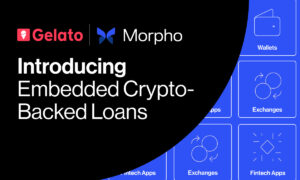In the ever-evolving landscape of cryptocurrencies, stablecoin, Tether USD (USDT) holds a prominent position. Stablecoins have emerged as a crucial component, providing a bridge between traditional fiat currencies and the volatile world of digital assets. In this comprehensive guide, we will delve into the intricacies of USDT, exploring its features, use cases, controversies, and its impact on the broader cryptocurrency ecosystem.
What is Tether USD (USDT)?
Tether (USDT) is a type of stablecoin, a cryptocurrency designed to maintain a stable value by pegging it to a reserve of assets, often traditional fiat currencies like the US Dollar. Launched in 2014, Tether aims to combine the benefits of cryptocurrencies — such as fast transactions and borderless transfers — with the stability of traditional currencies.
How Does Tether Work?
- Backing and Reserves
Tether achieves stability by being pegged to a reserve of assets. In the case of USDT, each token is supposed to be backed by an equivalent amount of US Dollars held in reserve. This backing is regularly audited to ensure transparency and maintain trust within the community.
- Blockchain Technology
USDT exists on various blockchain networks, including Ethereum (ERC-20), Tron (TRC-20), and others. The choice of blockchain can impact transaction speed and cost, allowing users to choose a network that aligns with their preferences.
- Issuance and Redemption
Tether tokens are issued or “minted” when the corresponding amount of fiat currency is deposited into Tether Limited’s reserves. Conversely, when users redeem USDT, the tokens are “burned,” and the equivalent fiat currency is returned to the user.
Use Cases of Tether USD (USDT)
- Trading and Investments
Traders often use USDT as a stable alternative during periods of high volatility. By converting their assets into Tether, they can protect their holdings from sudden market fluctuations while maintaining liquidity.
- Remittances
USDT enables quick and low-cost cross-border transactions. Its borderless nature and blockchain technology make it an attractive option for remittances, especially in regions with limited access to traditional banking services.
- Decentralized Finance (DeFi)
Tether plays a vital role in the DeFi space, where it serves as a stable medium of exchange and a unit of account for various decentralized applications, lending platforms, and decentralized exchanges (DEX).
- Hedging Against Volatility:
Cryptocurrency investors use USDT as a hedging tool to mitigate risks during turbulent market conditions. By converting their holdings to Tether, they can shield themselves from potential losses.
Controversies Surrounding Tether
- Lack of Full Reserves Transparency
Tether has faced criticism for not providing real-time audits of its reserves. While the company claims to have sufficient reserves, the lack of complete transparency has led to skepticism within the crypto community.
- Legal and Regulatory Scrutiny
Tether Limited, the company behind USDT, has been under investigation by regulatory authorities. Concerns about potential market manipulation and the legal status of Tether have raised questions about its long-term viability.
- Market Manipulation Allegations
There have been allegations that Tether issuance has been used to manipulate the prices of cryptocurrencies, particularly Bitcoin. Critics argue that the sudden creation of new USDT without proper backing could influence market dynamics.
The Future of Tether USD (USDT)
As Tether continues to navigate through controversies, it remains an integral part of the cryptocurrency ecosystem. The stablecoin market is evolving, with new entrants and regulatory frameworks shaping the landscape. The future of Tether hinges on its ability to address concerns, enhance transparency, and adapt to the changing regulatory environment.
- Enhanced Transparency Measures
To regain trust and alleviate concerns, Tether may implement more robust and frequent auditing procedures. Full transparency regarding its reserves could help establish credibility within the crypto community and regulatory authorities.
- Integration with Central Bank Digital Currencies (CBDCs):
As central banks explore the development of digital currencies, Tether and other stablecoins could potentially integrate with these initiatives, providing a bridge between traditional fiat and the digital economy.
- Evolution of Stablecoin Regulations:
The regulatory landscape for stablecoins is evolving rapidly. Tether’s future may be influenced by how governments and regulatory bodies choose to classify and oversee stablecoins, determining their role in the broader financial ecosystem.
- Competition and Innovation
Tether faces competition from other stablecoins that are actively addressing transparency concerns and regulatory challenges. The stablecoin market is dynamic, and Tether will need to innovate to maintain its position as a leading stablecoin.
Conclusion
Tether USD (USDT) has played a pivotal role in the cryptocurrency space, providing a stable and liquid alternative for traders, investors, and users engaged in various blockchain applications. However, the controversies and challenges it faces underscore the importance of transparency and regulatory compliance in the volatile world of cryptocurrencies. As Tether navigates through these challenges, its evolution will be closely watched by the entire crypto community. Whether it continues to be a dominant force or faces disruption from emerging stablecoins, the journey of Tether reflects the broader shifts and developments within the cryptocurrency ecosystem. Stay tuned as the story of Tether unfolds in this ever-changing landscape. Tether’s journey, like the volatile crypto market itself, is a testament to the dynamic nature of the blockchain space, where innovation, competition, and regulatory scrutiny shape the destiny of digital assets.

































